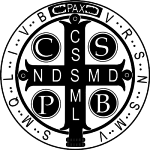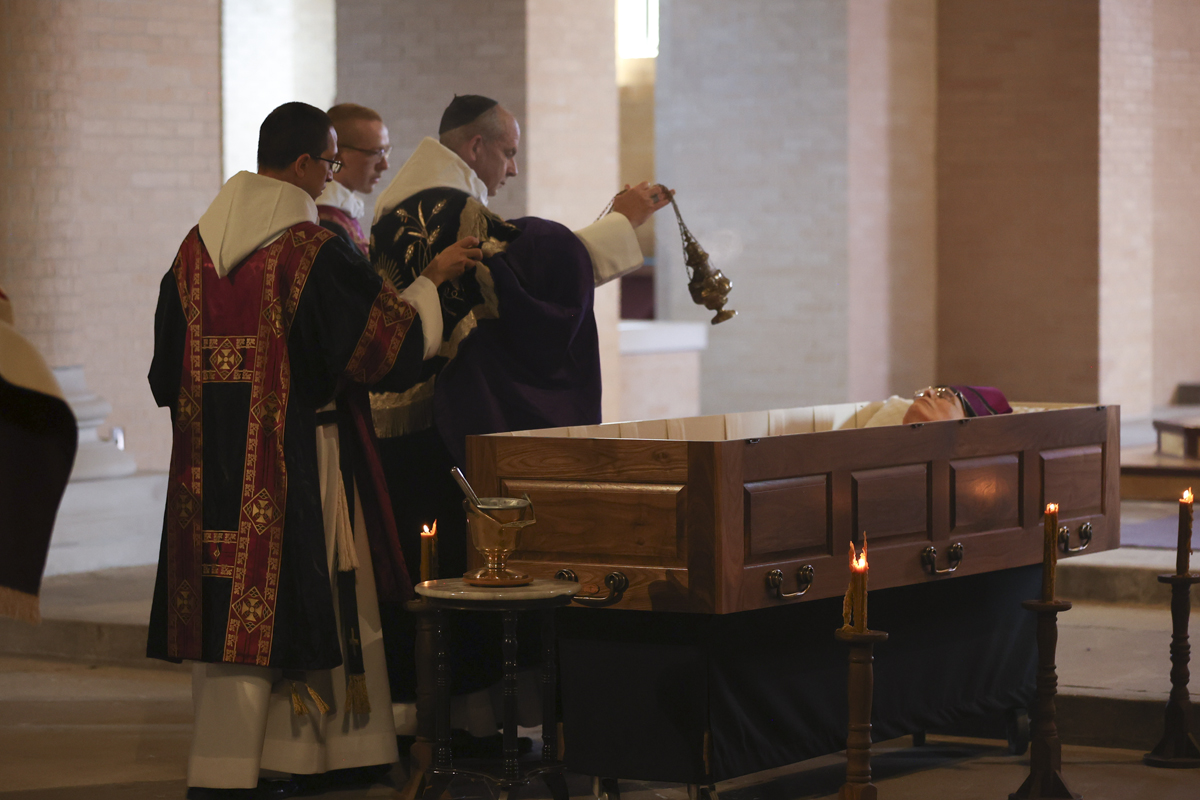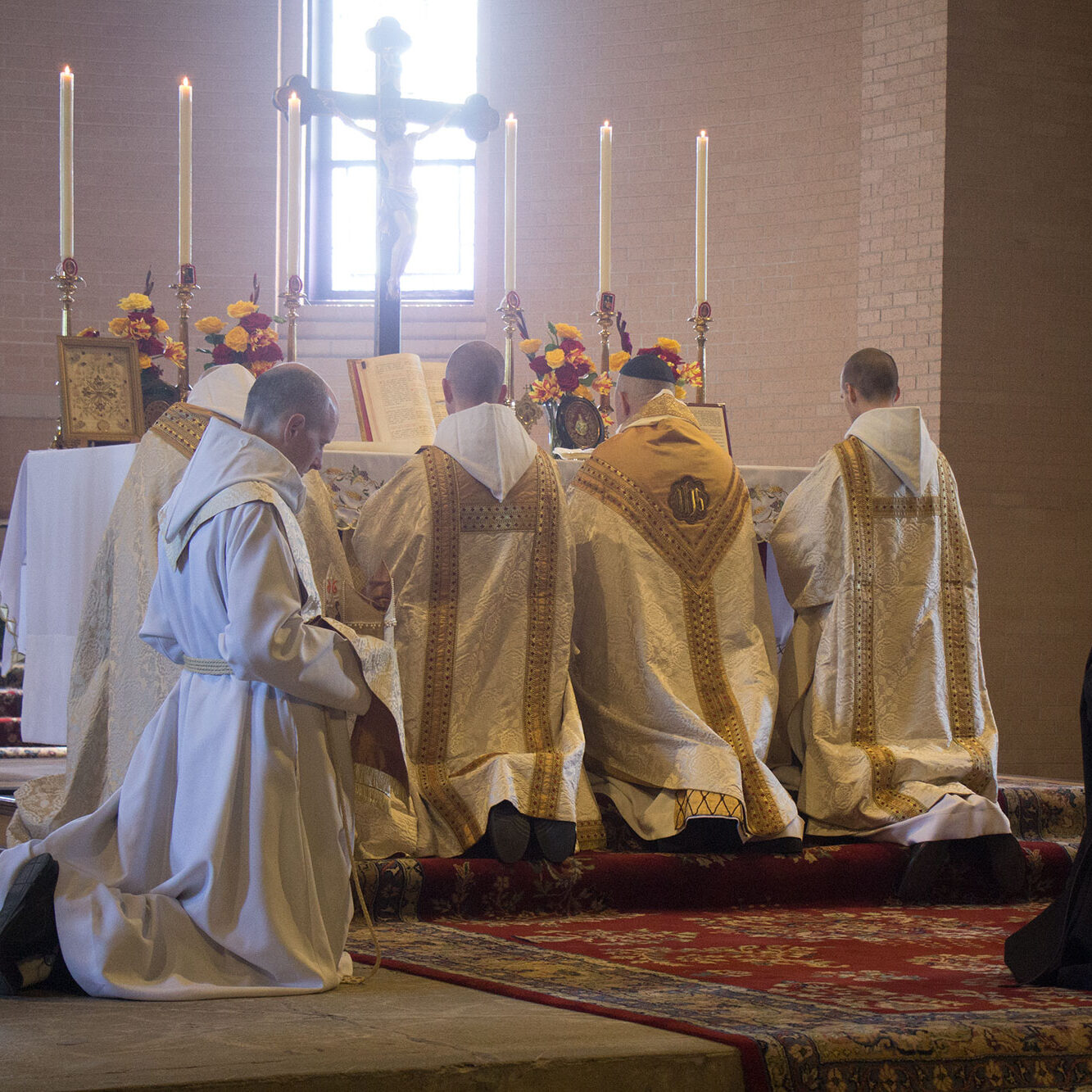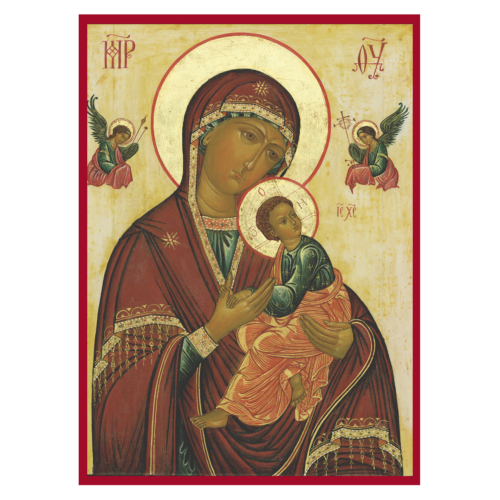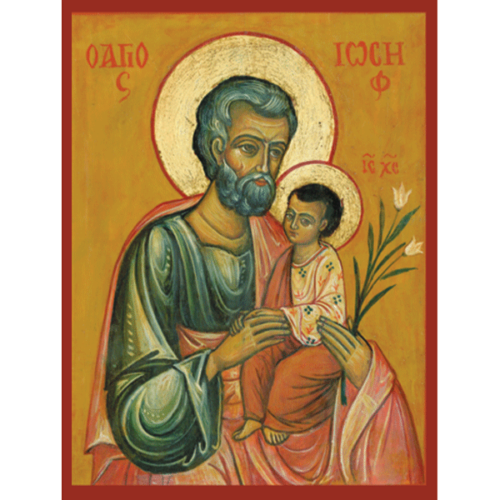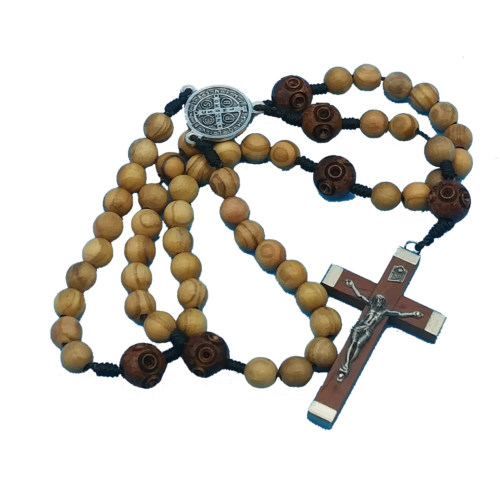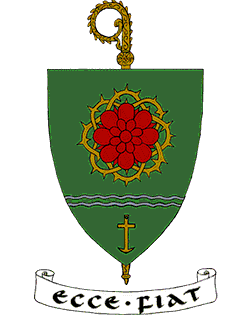Our Lady of Clear Creek Abbey
is a Benedictine community belonging to the Solesmes Congregation. It was founded in 1999 from the Abbey of Our Lady of Fontgombault in France and is located in the diocese of Tulsa, Oklahoma. Having been erected as a simple priory in 2000, Clear Creek became an abbey in 2010. The community currently counts 55 monks.
Like the other monasteries of the Solesmes Congregation, Our Lady of Clear Creek Abbey, having devoted itself from the outset wholly to the service of God in the hidden life, is to be counted among the institutes entirely ordered towards contemplation. By virtue of their vocation, the monks devote themselves to God alone in silence and in solitude, in constant prayer, and willing penance.
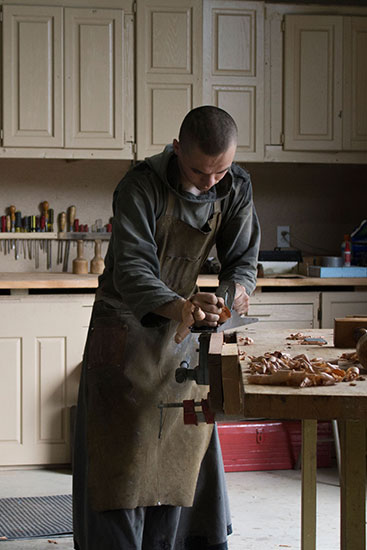
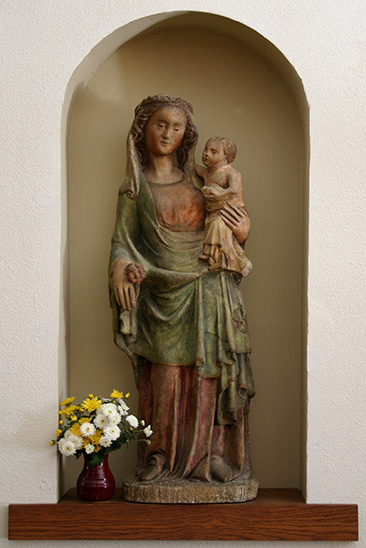
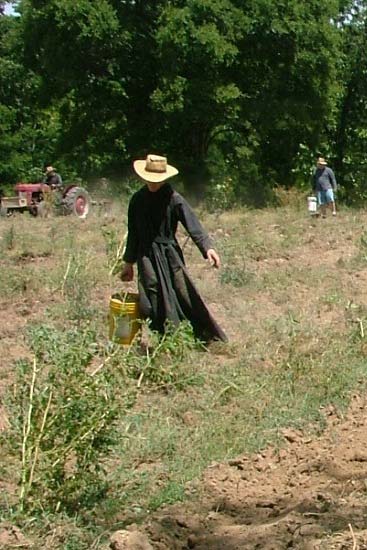
Horarium
Daily Schedule

...and rising to the Work of God, let them gently encourage one another... The Holy Rule, chapter XXII

...and let us rise at night to praise Him... The Holy Rule, chapter XVI

Therefore, let us consider how it becometh us to behave in the sight of God and His
angels, and let us so stand to sing, that our mind may be in harmony with our
voice.
The Holy Rule, chapter XIX

And let us be assured that it is not in many words, but in the purity of heart and
tears of compunction that we are heard.
The Holy Rule, chapter XX

"Seven times a day I have given praise to Thee" (Ps 118:164).

Idleness is the enemy of the soul; and therefore the brethren ought to be employed in manual labor at certain times, at others, in devout reading. The Holy Rule, chapter XLVIII

Let us, therefore, always be mindful of what the Prophet saith, "Serve ye the Lord
with fear" (Ps 2:11). And again, "Sing ye wisely" (Ps 46:8). And, "I will sing
praise to Thee in the sight of the angels" (Ps 137:1).
The Holy Rule, chapter XIX

If, however, the needs of the place, or poverty should require that they do the work
of gathering the harvest themselves, let them not be downcast, for then are they
monks in truth, if they live by the work of their hands, as did also our forefathers
and the Apostles.
The Holy Rule, chapter XLVIII

Let the oratory be what it is called, and let nothing else be done or stored
there.
The Holy Rule, chapter LII

Let them practice fraternal charity with a chaste love. The Holy Rule, chapter LXXII

In the first place, beg of Him by most earnest prayer, that He perfect whatever good
thou dost begin, in order that He who hath been pleased to count us in the number of
His children, need never be grieved at our evil deeds.
The Holy Rule, Prologue.

If there be skilled workmen in the monastery, let them work at their art in all
humility, if the Abbot giveth his permission.
The Holy Rule, chapter LVII

But as we advance in the religious life and faith, we shall run the way of God's
commandments with expanded hearts and unspeakable sweetness of love...
The Holy Rule, Prologue

But if perhaps another desireth to pray alone in private, let him enter with
simplicity and pray, not with a loud voice, but with tears and fervor of heart.
The Holy Rule, chapter LII

For what page or what utterance of the divinely inspired books of the Old and the New
Testament is not a most exact rule of human life? Or, what book of the holy Catholic
Fathers doth not loudly proclaim how we may go straight to our Creator?
The Holy Rule, chapter LXXIII

Monks should always be given to silence, especially, however, during the hours of the
night.
The Holy Rule, chapter XLII

Let them sleep clothed and girded with cinctures or cords, that they may be always
ready...
The Holy Rule, chapter XXII
Latest
Three Hearts Pilgrimage 2024
The annual three day pilgriamge to Clear Creek Abbey concluded today, October 12th, with the Pontifical Mass celebrated by the Right Reverend Father Jean Pateau, Abbot of Notre-Dame de Fontgombault, who gave the following homily Right Reverend Father, Dear Fathers and Brothers, Dear Brothers and Sisters, pilgrims and friends of Clear Creek, When I was a child, I loved to hear [...]
Coming Of Age
Dear Friend of Clear Creek Abbey, It was a quarter of a century ago, on the morning of September 15th well before dawn, when the founders of our monastery packed up the last of their effects and prepared to make the long journey from France to America. During the chant of the Benedictus canticle, toward the end of the office of [...]
Glimpse into the cloister: Monastic Silence
In a house full of adult men of varying temperaments and origins, one can imagine that certain rules would be necessary to maintain peace and good order. Saint Benedict, in fact, puts emphasis on this practical aspect when regulating the silence which the monks must keep at night: it is intended to allow all to sleep without being kept [...]
Ora et Labora
“Let us so stand to sing, that our mind may be in harmony with our voice.”
-St. Benedict, Holy Rule, Chapter 19
In keeping with the traditional motto of the Benedictines, Ora et Labora – Pray and Work, the monks come to the church seven times each day and once at night to praise God in liturgical prayer. The Holy Liturgy, the “Work of God,” as Saint Benedict calls it, is the monk’s daily bread. It forms the center of his life with its two components, the Holy Sacrifice of Mass or Eucharist and the Divine Office or Liturgy of Hours. At Our Lady of Clear Creek Abbey we celebrate Holy Mass and the Hours in Latin, which is the proper language of the Roman rite and especially appropriate for those who celebrate each day the Divine Office in choir with the traditional Gregorian Chant.
Listen to a sample of our Gregorian Chant here:
“Ave Maria, gratia plena, Dominus tecum: benedicta tu in mulieribus, et benedictus fructus ventris tui – Hail Mary, full of grace, the Lord is with thee: Blessed art thou amongst women, and blessed is the fruit of thy womb” (Luke 1:28, 42).
(Offertory Antiphon from the 7th Century, in the Eighth Mode.)
“Idleness is the enemy of the soul. Therefore should the brethren be occupied at stated times in manual labor.”
-St. Benedict, Holy Rule, Chapter 48
The monks of Clear Creek endeavor to be self-sufficient, cultivating the land, raising livestock, and selling products made in their own workshops. They are dependent however on the generosity of benefactors to complete the construction of the Abbey.
Some of our monastic products
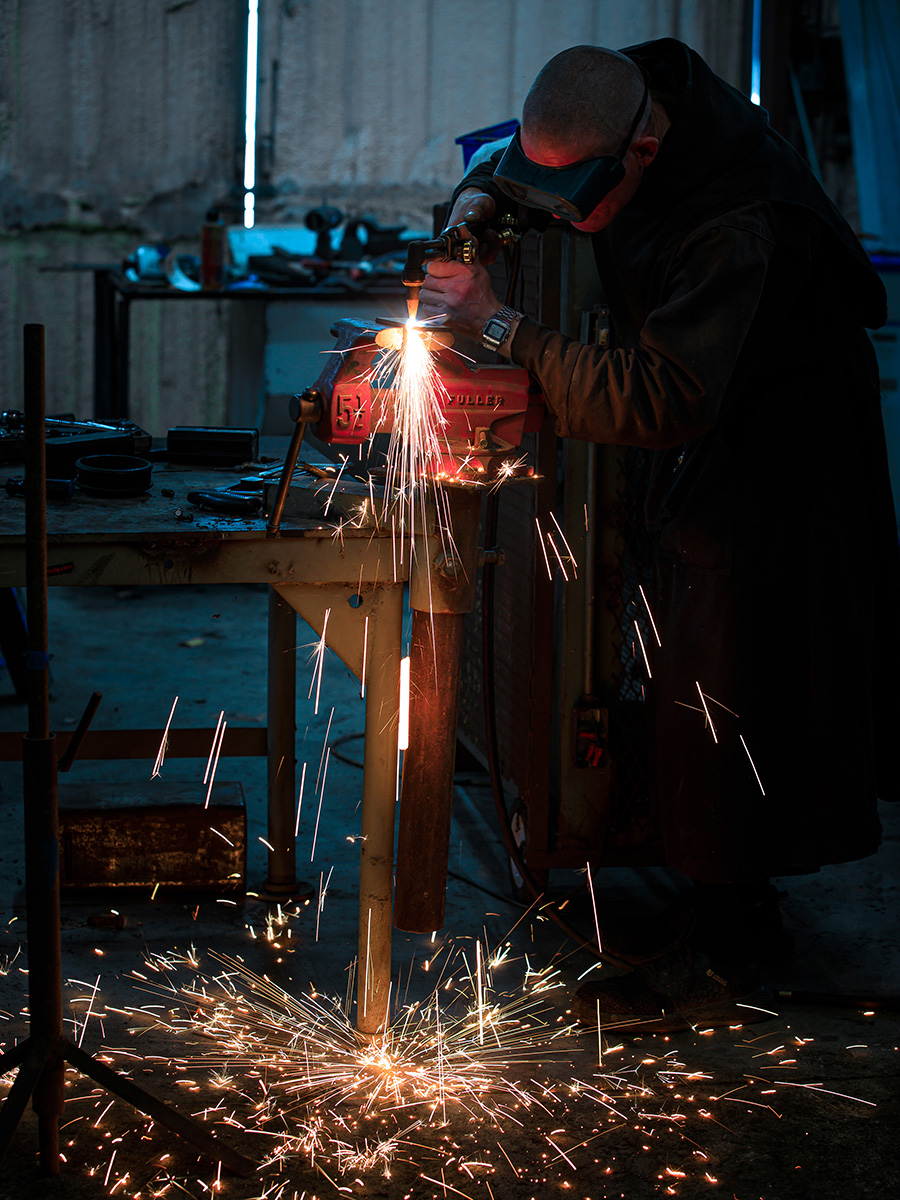


Origo
History and Origins
The Integrated Humanities Program
In the 1970s, at the University of Kansas, three professors inaugurated a Great Books program (Pearson Integrated Humanities Program, or PIHP) with a grant from the National Endowment for the Humanities. Through their study of Western Civilization, a number of these students became interested in monastic life and found their way to Notre-Dame de Fontgombault Abbey in France. Some entered the novitiate, hoping to be part of a new monastic foundation in America some day.
Blossoming of Vocations at Fontgombault Abbey
When the American university students arrived at the French abbey, they found it flourishing with many vocations, despite the crisis of vocations going on almost everywhere else. There were so many vocations that Fontgombault had to found new monasteries. As the American novices needed to get a solid formation, the project to found in America was put off for many years, but not forgotten.
Long-Awaited Foundation in America
Beginning in 1991, Dom Antoine Forgeot, abbot of Notre-Dame de Fontgombault Abbey began to make exploratory trips to the United States, accompanied by Dom Francis Bethel. After visiting many sites in several states and after many hesitations, a property was found in 1998, in the diocese of Tulsa, Oklahoma, that struck the abbot and many others as very well suited for the American foundation. It was a ranch located along Clear Creek. The idea was approved by the Chapter of the French abbey and on the feast of the Assumption of that same year 1998, a charter was signed between the abbot of Fontgombault and the bishop of Tulsa formally recognizing the existence of the new foundation.
Monastic Life begins at Clear Creek
On September 15th, 1999, the main group of founders arrived in Oklahoma by plane from France. A pilot group had preceded them to get things set up to receive the main body of founders. On the feast of Our Lady of Lourdes, February 11th, 2000, the little Priory of Our Lady of Clear Creek was officially inaugurated in the presence of Bishop Edward J. Slattery of Tulsa, of Bishop Basil Meeking of Christchurch, New Zealand, of Abbot Antoine Forgeot, and of a host of priests and friends of the new community.
“Cowboy Bethlehem” of Early Years
The first monastery was established, partially, in a large log cabin and, partially, in a barn and stable, where the previous owners had kept their saddle horses. The horse stalls became monastic cells, and the barn became the first chapel. Small wooden tool sheds were added as additional cells for new postulants as they arrived. Larger accommodations had to be provided for. A professor of Notre Dame University, Thomas Gordon Smith, was selected to be the new monastery’s architect, and plans were drawn up for a spacious monastery of Romanesque inspiration to be built of stone and brick on a hill above Clear Creek.
The Big Move
By the morning of January 2, 2008, much had been accomplished. In 2003 a stone bridge had been erected over Little Clear Creek; the foundations for the church and a residence building had been poured; the first stone had been blessed by the bishop of Tulsa. Then, in 2007, the crypt of the church and the first residential building had been completed. It was time to move into the permanent monastery. Despite the cold temperature that morning (12 degrees F.), an army of monks, neighbors, and friends, driving every imaginable type of vehicle, was on the move, under the guidance of a monk with a walkie-talkie. Teams in trucks and tractors took load after load up to the community’s new site. By the end of the day the monks were entirely exhausted, but the monastery was installed in its new and definitive home (at least this side of Heaven). On May 12th of the same year, Bishop Slattery and a great number of friends were on hand for the blessing of the new monastery.
Elevation to the Status of Abbey
Once installed in its definitive location, the community continued to grow. On February 10, 2010, having gathered the community in the Chapter Room, Dom Antoine Forgeot, abbot of Notre-Dame de Fontgombault, announced to the monks the canonical elevation of the simple Priory of Our Lady of Clear Creek to the status of abbey sui juris. The next day, feast of Our Lady of Lourdes, Father Philip Anderson was named the first abbot of Our Lady of Clear Creek Abbey. The blessing of the new abbot took place on the following April 10th.
The Building of the Abbey Continues
Thanks to a large gift received in 2009, construction on the church was able to move forward in 2011. The west façade, the nave, and the transept were raised to half their intended height. A roof was put over this new structure, allowing it to be used already as a church. In 2013 the schematic architectural plans for the remaining buildings were completed. A contract for the construction of the church’s eastern portion, or chevet, was signed on March 10, 2016.
“We shall run the way of God’s commandment’s with expanded hearts and unspeakable sweetness of love.”
From the Rule of St. Benedict, Prologue
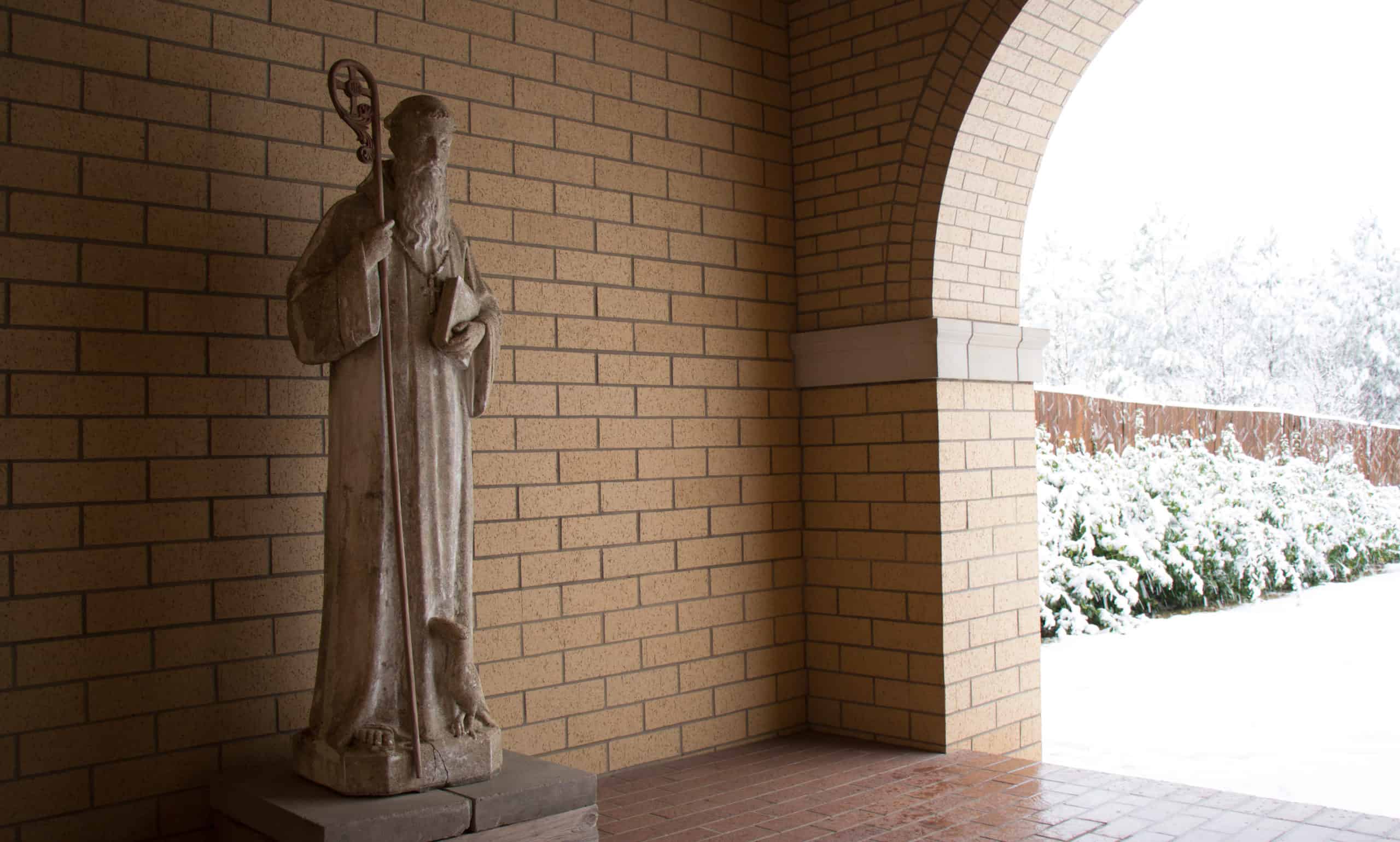
Patriarch of the Monks of the West
Saint Benedict, the patriarch of western monks, lived in Italy in the 6th century. He was heir to a monastic tradition that dates back to the first centuries of the Church and has its source in the Gospel: “As for yourselves,” says Jesus, “be perfect as your heavenly Father is perfect.” The evangelical counsels of poverty, chastity, and obedience are means recommended by Christ for speeding the reign of love in souls, in which Christian perfection consists. To help them become perfect, Saint Benedict proposes to his disciples to seek God by living these counsels in monastic community under the authority of the Rule and of an Abbot who will be their spiritual father.
